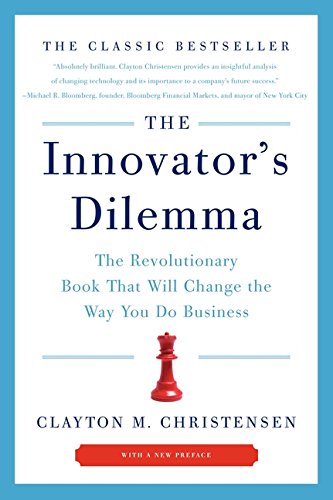The British illusionist Derren Brown has built quite a reputation over here for putting together audacious tv specials that make you consider what the basis for your perception of reality is actually built on. For me, one of the best shows he has ever done, is “The System” in which he takes a single mother from London, and explains to her how he has a foolproof system for betting on horse racing; a system that he is so confident about that he will front the money for the first 6, yes SIX bets, to prove it works, so long as she gathers together all her life savings for the 7th bet.

The show should be required viewing for any student studying probability theory in mathematics (the bit when he shows how to flip 10 consecutive heads is highly instructive [no, no camera tricks were used]). It should also be required viewing for MBAs and people considering whether to invest their hard earned cash in one of those special (and high fee charging) investment portfolios run by [Insert Name Here] the latest market beating uber investment manager. And so to Professor Clayton Christensen and his much cited theory of disruptive innovation. Here it is in a nutshell:
A disruptive innovation is an innovation that helps create a new market and value network, and eventually disrupts an existing market and value network, displacing an earlier technology
The crucial value add of the economic theory from Christensen is that companies that fail and are disrupted by the newcomers, do so because while they can spot the new barbarians, they are unable to competitively invest in that innovation, because they are locked in to a sustaining arms race with the current market. If only they had some sort of management and investment strategy; perhaps an innovations group to bring disruption from within. A strategic investment approach that hoovers up the threatening start-ups; or maybe a Steve, an Elon or a Jeff; a visionary to lead them out of the valley.
I’ve read Clayton’s books. They are a very good read and there’s much to think about within the phosphors on the screen (yeah, I upgraded). Truth be told, as someone who has had a job title with ‘Innovation’ in it, there was also a certain amount of primal scream fulfillment as well. But while I’ve always felt that the basics of the argument ring true, the examples have, in truth, always been a struggle for me.
The car argument is a good one. The car, wasn’t a disruptive innovation, as it was a luxury item that didn’t compete with the market for horse powered transportation. The Ford Model T was a disruptive innovation because at an initial launch price of $850 it was affordable by the masses, who adopted it in droves. Four months wages, apparently for a Model T. Really? The average wage for a US worker in 1909 was $750 per year. So a Ford Model T car was, when one accounts for food and rent and so on, a clear multiple year investment, with running costs to put on top of that. I’m not disputing the fact that the Model T was a great success, but one wonders whether price was the great catalyst.
Now, I’ve checked and the luxury car market is doing just fine. Horses? Not so much. But why? Well the telephone is well on it’s way to mainstream adoption, and with it comes a greater appreciation of both the connectedness of people and information, and the physical distances between those things. All of a sudden the desire to travel long distance quickly (looking for work where the market actually is, contact with distant relatives out beyond a day on horseback and so on) can no longer be satisfied by the horse. So, the disruptive transport innovation that led to the success of the Ford Model T was in fact the telephone.
Does that sound good? Is there a logic to it? A coherent narrative? Sounds very truthy doesn’t it. There’s no evidence for it at all. I made it up. It’s a decent hypothesis backed up by some cherry picked ‘data’ to support the theory. It has no predictive value.
Over in The New Yorker, Jill Lepore has, to put it bluntly, taken apart the evidence used by Christensen to support his theory of disruptive innovation. Failed companies that weren’t so much dead, as feeling really quite alright actually, technologies that didn’t usurp the incumbent technical stack in anything like the way the disruption innovation narrative would have you believe. Stop reading this now – go over to The New Yorker and read for yourself. It’s a superbly written article and it deserves your attention. Please come back when you’re finished.
If Jill’s evidence survives enquiry, then the foundations for Disruptive Innovation as an economic theory look to be non-existent. This is quite a bombshell. But wait, hang on, disruption does happen! How can this be wrong?
We are successful as a species because we use narrative to pass information down to future generations. We don’t have to rediscover things in each generation. Stories, as tools to help us avoid the mistakes of our forebears, are the cultural artifact that makes our civilization resilient. No wonder in a business environment we look for successful case studies and general use cases to support the mitigation of risk. Disruptive Innovation ticks all the right boxes when skilfully written down (and it is a well constructed argument). A compelling narrative, a list of great enterprises that got it wrong and a hint of a recipe to avoid those mistakes. No Kodak moment for us, we’ve read the book.
But then we have Derren Brown and his equally devastating reveal to that single mother betting her life savings on the horses….
Given enough people to start with, somebody will win on the horses six times in a row, because that’s how dumb luck works. All you need do is the math, to calculate the number of punters you need to start with. What does it tell you about your chances of winning on horse number 7?
Nothing.
But what about Ford, Jobs, Musk, Bezos? What about ’em? Sure they are geniuses. Sure their ideas were or are miles ahead of the competition – light years out in fact. Sure they saw clearly what the rest of us can only dimly comprehend, if at all. So what. Here’s the truth. You never hear about the genius who didn’t make it big, who blew all their capital on an equally great idea that never went mainstream and reconstructed the economic fabric of their worlds. Somebody gets lucky. Somebody always gets lucky. The overwhelming majority, well, they are grist to the mill.
The disruptive ideas are out there; wearable tech; internet of things; altered reality; a god in your pocket with an answer to any question you could possibly ask, biding their time, waiting for the culture to welcome them. In the game of Disruptive Innovation, you win or you die, there is no middle ground. There are no rules. No formulae. But winners – the winners get great stories told about them. They become part of the myths we weave to pass on the information down the generations, because the very fact that they did disrupt, means there must be a reason, some fundamental truth to how it happens, just waiting to be decoded. But who knows who will win? Not Clayton. Not any of us. All we know is, somebody will. And afterwards, somebody else will come along, with a magazine article and a book deal and a keynote tour with first class travel and 17 minutes at a TED gig. Somebody…
Discussion
20 Thoughts on "Well, That About Wraps it up for Clayton Christensen"
One of the most thought-provoking passages to me in Lepore’s great article is about how the term we use for change is a totem of our times:
“The eighteenth century embraced the idea of progress; the nineteenth century had evolution; the twentieth century had growth and then innovation. Our era has disruption, which, despite its futurism, is atavistic. It’s a theory of history founded on a profound anxiety about financial collapse, an apocalyptic fear of global devastation, and shaky evidence.”
There is a psychological appeal to “disruption” and a vagueness to “innovation” we need to grapple with, as well. Why not “progress” and “improvement”? While Facebook is an innovation and perhaps a disruption, does it constitute progress and improvement?
An excellent summary and expansion of Lepore’s piece, David. Well done.
Disruption has more shock value and this is an era of hype. But it also has negative connotations, unlike the other terms. This has puzzled me for some time. Is disruption now a good thing? Are we seeing a era of wannabe revolutionaries?
I thought Lepore’s article quite wonderful because it does so well what Christensen does so badly, cite solid evidence in support of a claim, without distorting the actual historical events.
For a while now, I’ve had to turn to Evgeny Morozov, author of “The Net Delusion” and “To Save Everything, Click Here,” for any serious analysis about the claims being made for new technologies and the disruptive “progress” they are said to bring with them as long as there are people smart and forward-thinking enough to embrace them uncritically. In this world view, anyone who doesn’t embrace either the technologies without question or the ensuing disruption they cause is a stupid Luddite. Case closed.
Thus it’s great to see a more mainstream and less furious voice looking critically at Christensen’s claims. It will be interesting to see the reaction of Christensen’s devotees(and there are many of them.) I’m expecting the “She is a Luddite who hates technology, and she writing for a soon-to-die print magazine anyway so who cares” argument because I think the actual case she makes is too solid to challenge with any success.
I have to confess, I find Mr Morozov a bit much on occasion. His attack on Tim O’Reilly was a bit OTT. But there sure is plenty of snake oil being sold. I think a lot of cherry picking gets done with the best of intentions. The attempt to see signal in what is noise. Economic studies seem vulnerable to this. And yes, there’s already a response to the article going on. As you suggest, early gambit appears to be the luddite writing for one of them there dinosaur edifices plus a dose of she cherry picked more!
I agree completely with this: “I have to confess, I find Mr Morozov a bit much on occasion.” But I think he can, with some prominent exceptions, be very astute. And, except for maybe Jaron Lanier and more recently, ed tech blogger Audrey Watters, no one else seemed to be challenging Christensen’s arguments. Or if they were, I just didn’t know about them, which is certainly possible.
I think the whole, “You disagree? Well you are just a hopeless and, very probably, dumb Luddite” argument has seen its day, although it worked for a good long while, too long actually. The HBO series “Silicon Valley,” Sebastian Thrun’s reneging completely on his claims to disrupt academia, Harvard’s admission that it did not consult with Christensen while planning its own version of the MOOC, and Lepore’s article in The New Yorker are all signs that people are not so willing to uncritically accept claims about the history and benefit of technological disruption.
I have to look, though, for the “she cherry picked more” response. For all I know, perhaps she did, and I want to see if someone can really make that case. Anyone have a link to that response to Lepore’s article?
Nassim Taleb calls this inclination to develop a narrative, even when no causal connection exists, the “narrative fallacy.” Some of Christensen’s claims seem to be based on a narrative fallacy, which Lepore points out without using the term (I think the term is helpful despite introducing jargon).
The thing that has always struck me about Christensen’s work, even absent the problems that Lepore has highlighted (especially regard the ongoing success of Seagate) is that it is quite narrow in scope yet presented as universal law. The business dynamics of the disk drive market during a period of time of rapid technological development and a concurrent shift from enterprise microcomputers used only by specialists to PCs used by everyone is just not broadly applicable.
For example, as I have written about previously here in the Scholarly Kitchen (https://scholarlykitchen.sspnet.org/2013/08/27/stick-to-your-ribs-why-hasnt-scientific-publishing-been-disrupted-already/), Christensen’s model does not work in STM and scholarly publishing as it is a completely different business environment with a very different set of cultural factors.
Another thing that has always struck me as off about Christensen’s model is that it only considers bottom-up disruption. In other words, the model only considers “good enough” products that are much cheaper than incumbents but that get better over time (while staying cheap) and move up-market. While I’m sure there are many examples of this that would hold up to scrutiny, there are also top-down disruptive models, the iPhone being the most prominent example.Christensen famously predicted the iPhone would flop because it was not a bottom-up disruptive technology. He then, after the iPhone proved to be one of the most successful products in history, engaged in a bit of ex post facto rationalization declaring that the iPhone was, in fact, bottom-up if one thought of it as a computer as opposed to a phone. That has always struck me as pretty weak beer.
All that said, Christensen’s disruptive model is a useful framework even if some of his examples do not hold up to factual scrutiny. But it is not a natural law, it is not applicable in many industries or at all times, and it is not the only way disruption can occur. And even when it is applicable, life is never as clean and clear-cut as theoretical models.
In agreement with your comments, but they open up another issue in that sometimes a new product just can’t be pigeon holed into what came before. Take the iphone, It’s a phone. It’s a computer (and to be fair to Christen I choose my plan on the best internet usage I can get rather then the number of texts or minutes – most plans vastly exceed my needs on those scores).
But it’s also a gaming device. It seems to have led to disruption there.
It’s a shopping device (and brought on more by Amazon FirePhone now).
It’s a mapping/direction-giving device. Bye bye Tom Tom.
It’s a new class and I’m not sure it can analysed against just phones, just pcs or the rest (and tablets complicate that picture). But Christensen analysed against just the one already existing class and got it wrong.
Winning on the horses six times in a row may be dumb luck for a given individual, but is, in fact, a matter of statistics and probability. Like Christensen (and, for that matter, Clay Shirky and others of that ilk), a broken clock is right twice a day. These people become celebrities mainly by stating the outrageous with anecdotal evidence to support it. Occasionally they get lucky.
Clayton Christensen has been recently attracting attention on another front related to journal publishing. An article in the June 9th edition of The Chronicle (http://chronicle.com/blogs/wiredcampus/latest-christensen-disruption-crowdsourced-journal-article/53153) discusses his use of crowdsourcing to circumvent the ills of conventional journal peer review for a piece published in the June issue of Harvard Business Review (HBR) (http://hbr.org/2014/06/the-capitalists-dilemma/ar/1)
The article is not so much based on crowdsourcing Harvard Business School alumni to collect data as asserted, but performing a form of social surveying in an online environment and then analyzing the data with a conventional clustering technique. This procedure Christensen terms a welcome way to circumvent the traditional ills of peer review. In the video accompanying the article Christensen bemoans the route of peer review (e.g., time lapse, multiple revisions, procrastinated editorial decision-taking). In that video he goes so far to say ‘never again’ regarding submission to a journal employing conventional peer review processing. The three-minute video embedded in the HBR article is worth the viewing time, but the climax regarding peer review is captured in the following statement from Christensen:
‘It (the crowdsourcing technique) is so much more efficient, it is so much more powerful than the normal academic method of doing research that I will never do that again. But every time I do research, I can do crowdsourcing from our alumni.’
The technique used to collect data for the article was more conventional than something that could be called crowdsourcing and was hardly a replacement for peer review processing. This particular disruption will have a short-lived life and not find application outside publications like HBR.
Reblogged this on Innovation Insight and commented:
There’s been a lot of static around the concept of disruptive innovation this week, based on a well written critique of Clayton Christensen’s original work by Jill Lepore at the New Yorker. David Smith discusses the issue in his most recent blog and I think one of the key ideas he presents here is that the concept is useful as an instructional tool. I agree with Jill Lepore that Christensen’s work is weak as a theory, but that doesn’t mean that it’s not useful as a framework for examining competition in an environment of increased and accelerating innovation. David’s point about the value of narratives is spot on in this respect and is worth remembering if you are reading the debate on the validity of Christensen’s work this week.
So a single article in a popular magazine, albeit a very good one, takes down 25 years of peer review research. Lepore has some interesting things to say, but come on this is the SCHOLARLY Kitchen.
Research saying what? What thesis are you defending?
Christensen has 25 years of peer review research published in the top business journals and you all are prepared, based on one popular magazine article, to claim it is undone. If Lepore wants to mount a scholarly challenge to Christensen’s work the Harvard Business Review is the place to do it. Christensen’s work may be over hyped, but that doesn’t make it wrong.
I very clearly wrote “If Jill’s evidence survives enquiry, then the foundations for Disruptive Innovation as an economic theory look to be non-existent.” The ‘if’ is important.
But, given that here evidence is a direct contradiction of presented facts, the issue about the length of the peer reviewed work is irrelevant if her evidence holds up. So far, I’ve not seen any responses that address the key facts she presents.
Now to HBR. http://hbr.org/guidelines-for-authors-hbr There’s nothing in these guidelines to indicate a peer review process. There is an editorial process that is clearly detailed.
Medicine has benefitted from evidence based medicine practises met analyses and the rest. Frankly, I’d welcome a lot more evidence based economics, because from where I’m standing the predictive powers of any number of economic theories appear to be largely missing.
Evidence of what, Joe? No one is denying that startups with new technologies sometimes become winners. This is common knowledge and it is called first mover advantage. That is not the issue.
This discussion is beginning to suffer from the lack of precise specification of the thesis in question.
Hi Joe.
I’ve clearly said that disruption does happen and I’ve also laid out a few disruptive ideas that are out there right now. Apple – have disrupted the smartphone market but as Mike points out above, that disruption doesn’t fit the Christensen model. Google – a fascinating example, but not so much disruptive as creating an entire new environment. They are the first goliath in internet search, a market that was so nascent when they arrived that they cannot be considered disrupters of it. Now, absolutely they have led to massively disruptive effects across all sorts of industries, but is them or is the fundamental nature of the internet itself- what’s the disruptor here. Again, doesn’t fit the Christensen model. Facebook – ditto it’s a new market – social graph data. Microsoft – Yup, fits the Christensen model but interestingly co-dependent on the PC so a complex wrinkle there. BMC and PLOS – not disruptive! Altering the flow of the funding, but we are all still here aren’t we? By the way PLOS and BMC clearly are very innovative, not arguing that point at all.
David W below is correct I think – In a quest to define different types of innovation, we are all at risk of overfitting the data. And we do need a good definition of disruption. The one we have now needs some modification I think. That’s not a bad thing.
What would I look for in evidence of disruption? A shift in the lifespan of various businesses. An extinction event. Then you have to be able to tie the observations you make around that event to a theory that explains them and has some predictive power. Asteroids of mass X will disrupt life on earth, ones of mass y will only have local effects. Newspapers… We’ve had ’em for hundreds of years, what are the population characteristics of newspaper businesses? lifespan, heterogeneity of the ‘species’ of newspapers – profits. etc etc.
I really don’t agree with any of your examples, David. Of course PLOS is disruptive. It is reducing the average income per article from around $5,000 to something closer to $2,000 and is enabling the restructuring of the funding agencies. Google has decimated consumer reference publishing. We know what Amazon has done to physical bookstores. I may be motivated to write more about this as time permits.


